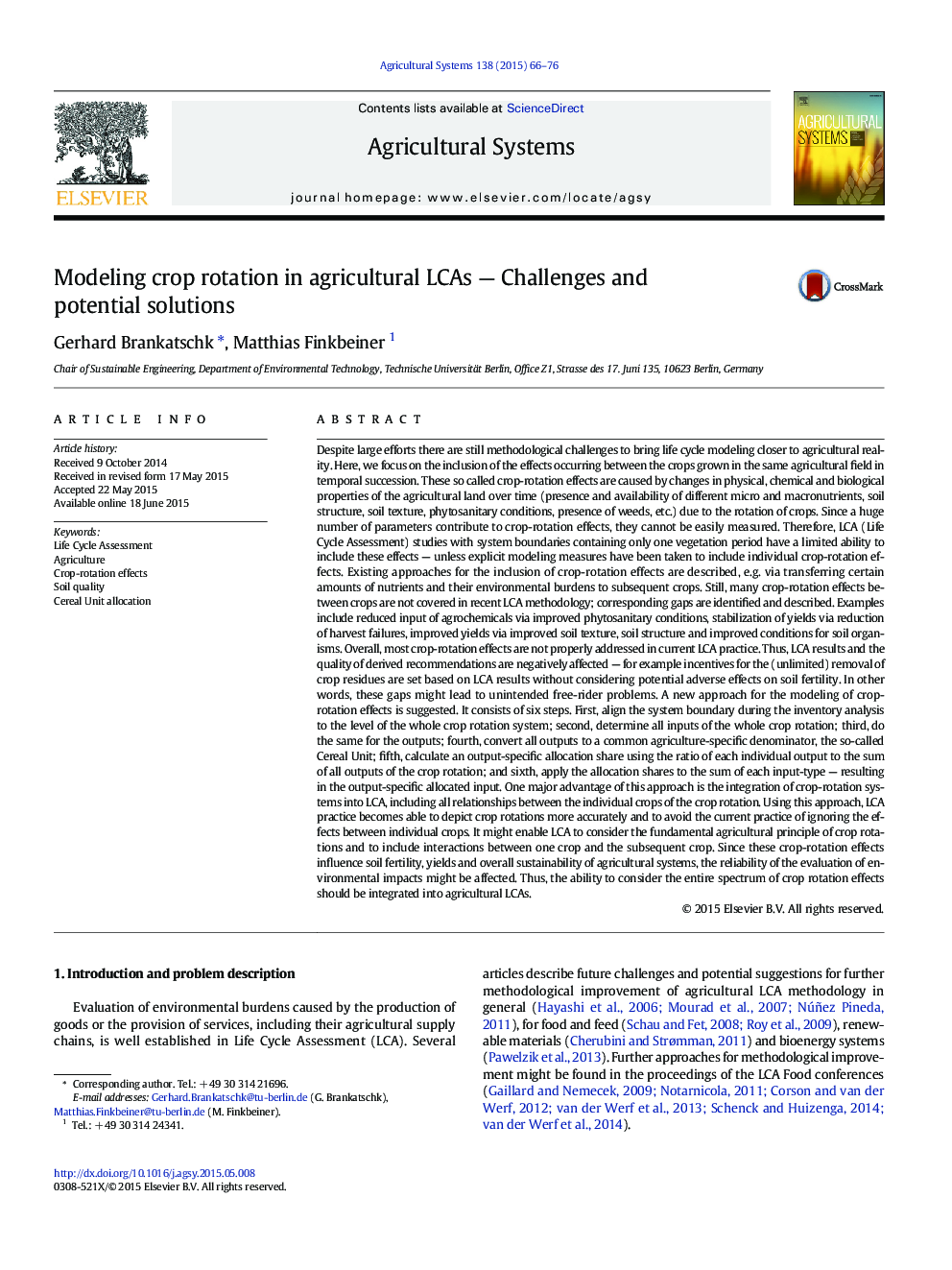| Article ID | Journal | Published Year | Pages | File Type |
|---|---|---|---|---|
| 4491182 | Agricultural Systems | 2015 | 11 Pages |
•Crop rotation (CR) effects influence environmental performance of crops & products.•Current LCA practice has limited ability to represent CR effects comprehensively.•A new inventory approach is presented for integrating CR effects based on Cereal Unit.
Despite large efforts there are still methodological challenges to bring life cycle modeling closer to agricultural reality. Here, we focus on the inclusion of the effects occurring between the crops grown in the same agricultural field in temporal succession. These so called crop-rotation effects are caused by changes in physical, chemical and biological properties of the agricultural land over time (presence and availability of different micro and macronutrients, soil structure, soil texture, phytosanitary conditions, presence of weeds, etc.) due to the rotation of crops. Since a huge number of parameters contribute to crop-rotation effects, they cannot be easily measured. Therefore, LCA (Life Cycle Assessment) studies with system boundaries containing only one vegetation period have a limited ability to include these effects — unless explicit modeling measures have been taken to include individual crop-rotation effects. Existing approaches for the inclusion of crop-rotation effects are described, e.g. via transferring certain amounts of nutrients and their environmental burdens to subsequent crops. Still, many crop-rotation effects between crops are not covered in recent LCA methodology; corresponding gaps are identified and described. Examples include reduced input of agrochemicals via improved phytosanitary conditions, stabilization of yields via reduction of harvest failures, improved yields via improved soil texture, soil structure and improved conditions for soil organisms. Overall, most crop-rotation effects are not properly addressed in current LCA practice. Thus, LCA results and the quality of derived recommendations are negatively affected — for example incentives for the (unlimited) removal of crop residues are set based on LCA results without considering potential adverse effects on soil fertility. In other words, these gaps might lead to unintended free-rider problems. A new approach for the modeling of crop-rotation effects is suggested. It consists of six steps. First, align the system boundary during the inventory analysis to the level of the whole crop rotation system; second, determine all inputs of the whole crop rotation; third, do the same for the outputs; fourth, convert all outputs to a common agriculture-specific denominator, the so-called Cereal Unit; fifth, calculate an output-specific allocation share using the ratio of each individual output to the sum of all outputs of the crop rotation; and sixth, apply the allocation shares to the sum of each input-type — resulting in the output-specific allocated input. One major advantage of this approach is the integration of crop-rotation systems into LCA, including all relationships between the individual crops of the crop rotation. Using this approach, LCA practice becomes able to depict crop rotations more accurately and to avoid the current practice of ignoring the effects between individual crops. It might enable LCA to consider the fundamental agricultural principle of crop rotations and to include interactions between one crop and the subsequent crop. Since these crop-rotation effects influence soil fertility, yields and overall sustainability of agricultural systems, the reliability of the evaluation of environmental impacts might be affected. Thus, the ability to consider the entire spectrum of crop rotation effects should be integrated into agricultural LCAs.
